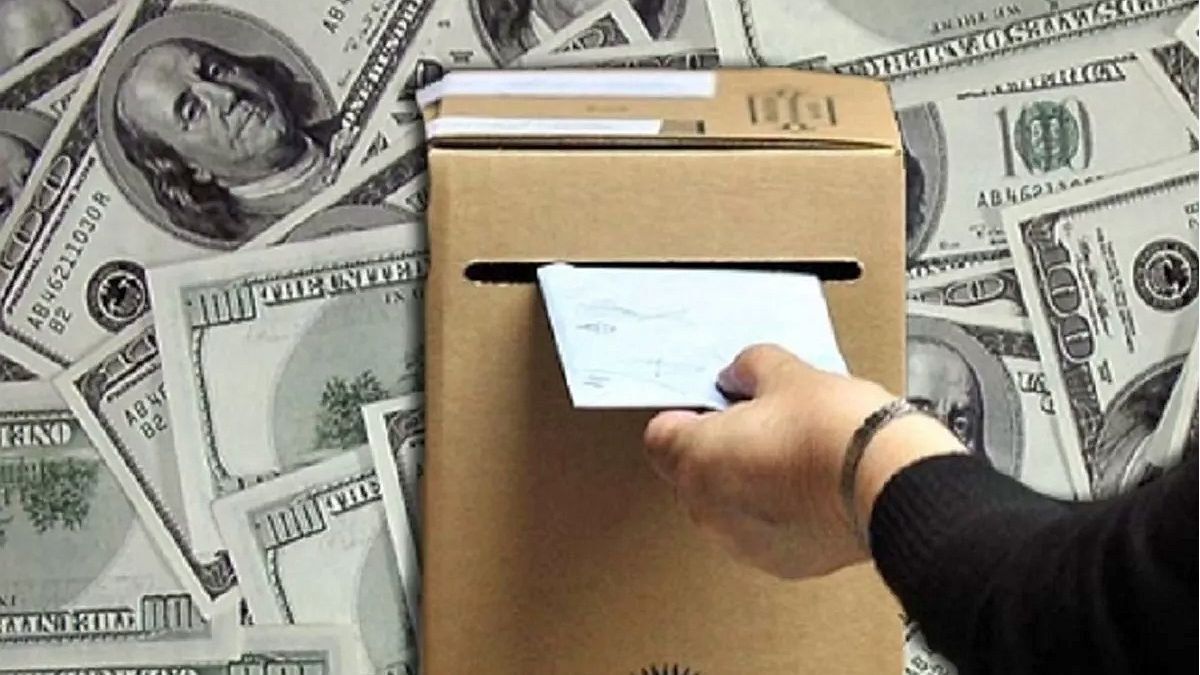The July exchange tension He left strong questions about the official dollar, in a context of high volatility with rates. Although in the first days of August the currency retreated almost $ 57 (-4.1%), this decline is explained partly due to the permanent reduction of withholdings, which encouraged greater liquidation of agriculture after weeks of brake due to loss of competitiveness. To this was added a key factor: The Supercent of Interest, from which part of the market again bet on “Carry Trade” strategies.
Now, in the coming months it returns one of the ghosts most feared by investors and governments: The elections. These are medium -term elections, although they are not held in all districts at the same time: the nationals and those of key districts such as Province of Buenos Aires and CABASo far, they used to share a election date. However, this time it was different: the city made them in May, Buenos Aires will have them in September and those of the Chamber of Deputies and Senate have date for October, as usually happens.
In the face of the October elections, the market begins to rever its investment portfolios. As every election year, analysts agree that The direction of the dollar variables It will depend largely on the political reading that investors do after the results, both nationally and in the province of Buenos Aires.
In dialogue with Scope, The economist Gustavo Ber warns that The reaction “will be subject to reading that the market makes of the result, which today is uncertain”.
In the province of Buenos Aires, the first electoral scale, the elections are divided into eight sections, allowing a force to triumph in some and not impose itself in the provincial total. In this scenario, Peronism continues to suspend the Axel Kicillof play to take off from the national elections, interpreted as an attempt to take distance from Cristina Kirchner. In parallel, the concern for an eventual loss of land in its historical bastion grows.
The economist Federico GlusteinMeanwhile, he added that “The first thing one would expect is that, if the government is doing well, the dollar and the rate are under control; if not, the reaction could be much more vertiginous”. For Andrés Reschinianalyst F2 Financial solutions, “The greater the forcefulness of the ruling party, the greater the demand for local risk and less the demand for high rates”.
Post elections: A favorable scenario can bring exchange and monetary relief
The “favorable” scenario for the government, according to Eric Paniagua, of Dekadrak Venture Capital Consultingit would be that La Libertad advances (lla) renews its strength in all electoral districtsthat in turn allow him not only to consolidate his political, social and economic vision, but also the political power within the National Congresswith which this solidification of the policies to be taken in the future will also be reprogrammed. “In that context, I would say that it is feasible that we see the dollar around the $ 1,300, a little below what is worth today, and at the same time as rates They accommodate in the order of 25% or 30%, thinking more about a bond rate, “he estimated
In a clear triumph of the ruling, Ber projects that “The dollar could loosen up to $ 1,250 and the converge rate towards 20%”in a context of lower dollarization and More instruments in pesos. Glustein It coincides that in that scenario the exchange rate would remain content: “We could see a dollar around $ 1,400 at the end of the year, with a rate aligned with monthly inflation, which should be between 1.5% and 1.9%”.
For Reschini, a favorable result “It would strengthen the weight and local assets, including ´equity´ and sovereign debt in pesos”since the market “I would see more muscle to carry out the reforms” and would reward the Government with minor requirements. This process would relieve the load of fees and expand the maneuvering margin for the Central Bank.
Post Elections: A “regular” scenario for lla would bring caution and intermediate rates
In case of an ambiguous result, where the government wins, but by a limited margin and leave open questions for 2027, Ber esteem that “The dollar could continue around $ 1,350 and rates around 35%”. Glustein anticipates that “There could be a higher rate to pay the neutral result, generating some distrust, and one dollar moving between $ 1,450 and $ 1,500”.
For Paniagua, it is feasible that there is a “more pressed dollar, close to the $ 1,400 “, while the interest rate I would also go up“along with that expectation of devaluation that will become a little more spicy for the last 2 years of government.”
“Always thinking that the possibility of passing new laws and reforms by Congress is subject to that transient weakness, which may have if the electoral result does not achieve a great,” said the economist.
Reschini points out that, in this context, “The position will be more towards caution if the interpretation is adverse to the ruling party, although not bluntly”. This would imply that part of the Flows are still looking for dollar coveragewhile another portion remains in pesos, with the rate functioning as an anchor to sustain the demand for local currency.
Post elections dollar: an “unfavorable” scenario for lla would bring pressure on the dollar and jump in rates
Before a scenario of clear defeat of the ruling party -which today the polls do not contemplate -, analysts warn that the dollarizing pressure could be intensified, forcing to raise the rate above the current levels. For Ber, “the dollar could rearrange up to $ 1,450, testing the band’s roof, and rates exceed 50%” in an attempt to stop the dollarization of portfolios. Along the same lines, Glustein points out that “the subsequent movement could be more vertiginous than expected, under the hypothesis that another type of policy would be adopted to sustain itself in power.”
Reschini notes that an adverse result “It would make the market continue to demand higher rates in local currency, with less demand for Argentine risk”. The impact would be felt not only on the exchange rate, but also in Bonds and actions, with greater volatility and pressure on reservations.
For Paniagua, it is feasible that the dollar “has a much more sustained trend looking for $ 1,500, or perhaps above the band, where we see an active intervention of the Central Bank.” Meanwhile, the interest rate It would also be higher: “We should probably think of emergency situations, which converge in the order of 60%, as we have seen, or perhaps worse,” he added.
The signs that can give the polls will not only mark the government agenda, but will also define the pulse of the main financial variables for the end of the year.
Source: Ambito
I am a 24-year-old writer and journalist who has been working in the news industry for the past two years. I write primarily about market news, so if you’re looking for insights into what’s going on in the stock market or economic indicators, you’ve come to the right place. I also dabble in writing articles on lifestyle trends and pop culture news.



